Zenodo is a general-purpose open-access repository developed under the European OpenAIRE program and operated by CERN . It allows researchers to deposit data sets, research software, reports, and any other research related digital material. For each submission, a persistent digital object identifier (DOI) is minted, which makes the stored items easily citeable.
We will illustrate this process by creating a release of a repository stored in our GitHub account, uploading a copy into Zenodo, and using the DOI provided by Zenodo in our manuscript before submitting it to a scientific journal.
This is the repository we are going to upload to Zenodo:
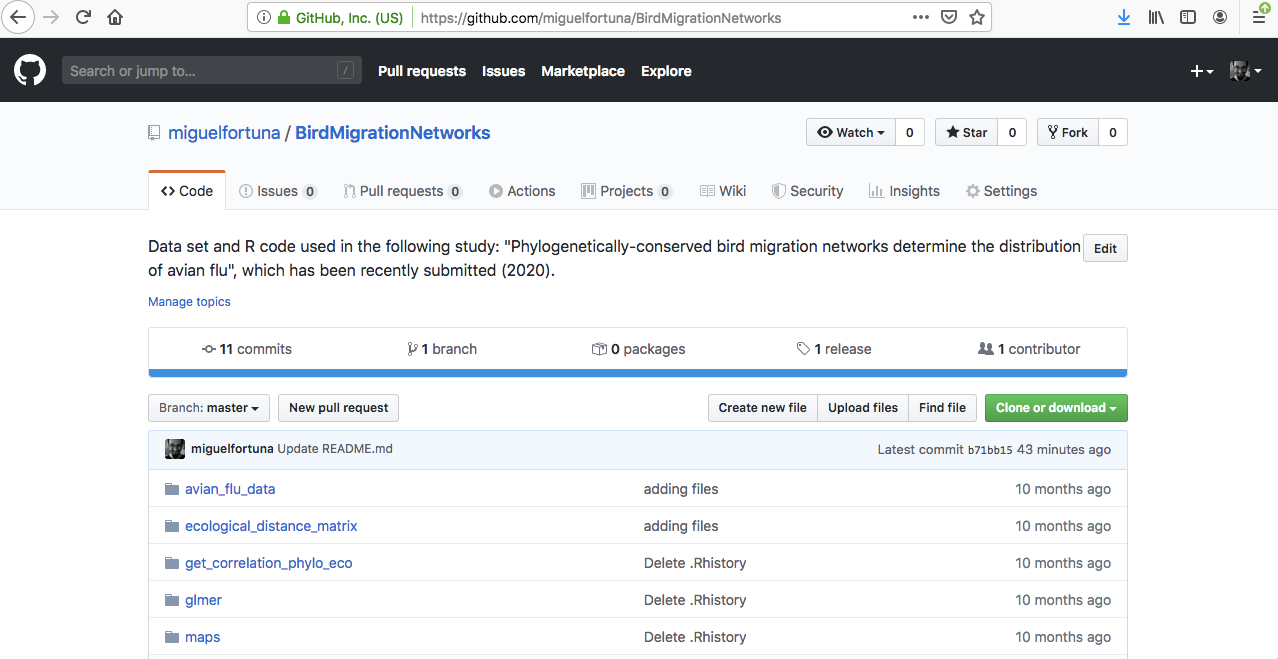
Let's start. Go to the Zenodo website:

Now, Log in to your account or Sign up if you do to not have registered in Zenodo yet.
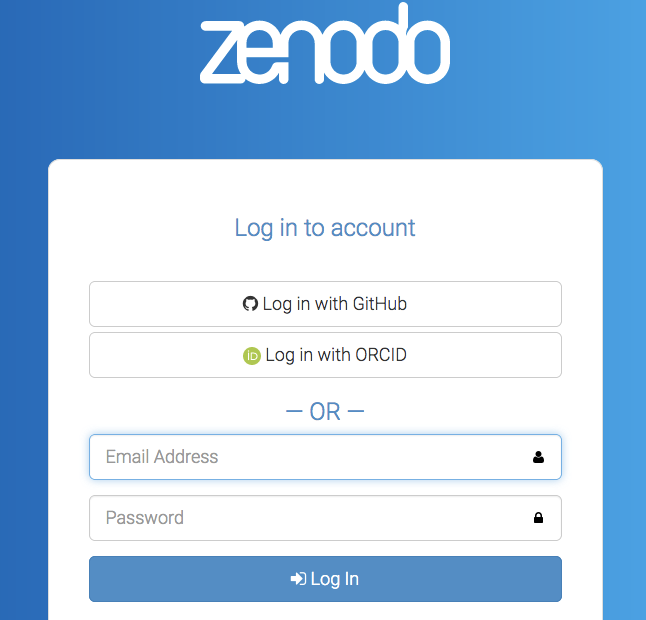
Once you log in, go to GitHub:
Note that you need to authorize Zenodo to connect to your GitHub account in theGitHubsection. Zenodo will redirect you to GitHub to ask for permissions to usewebhookson your repositories.

Then, enable the repository (from OFF to ON):

Click on the recently enabled repository.

Next, we are ready to create a release for that repository (click on Create release and we will be redirected to the GitHubrepository). If we didn't do it before, the following screen will show up:
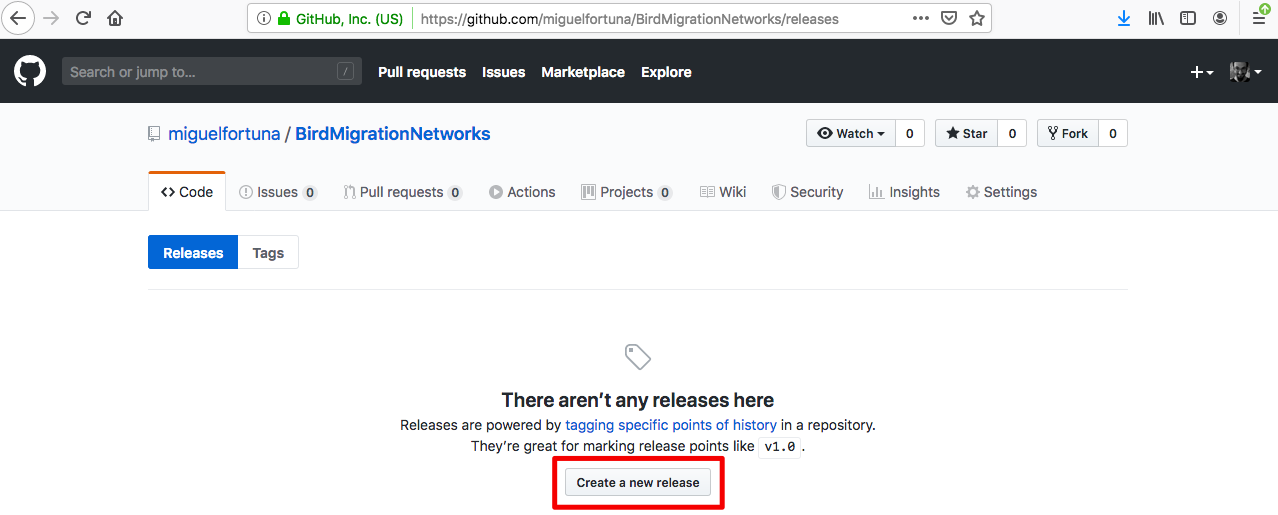
Click on Create a new release:
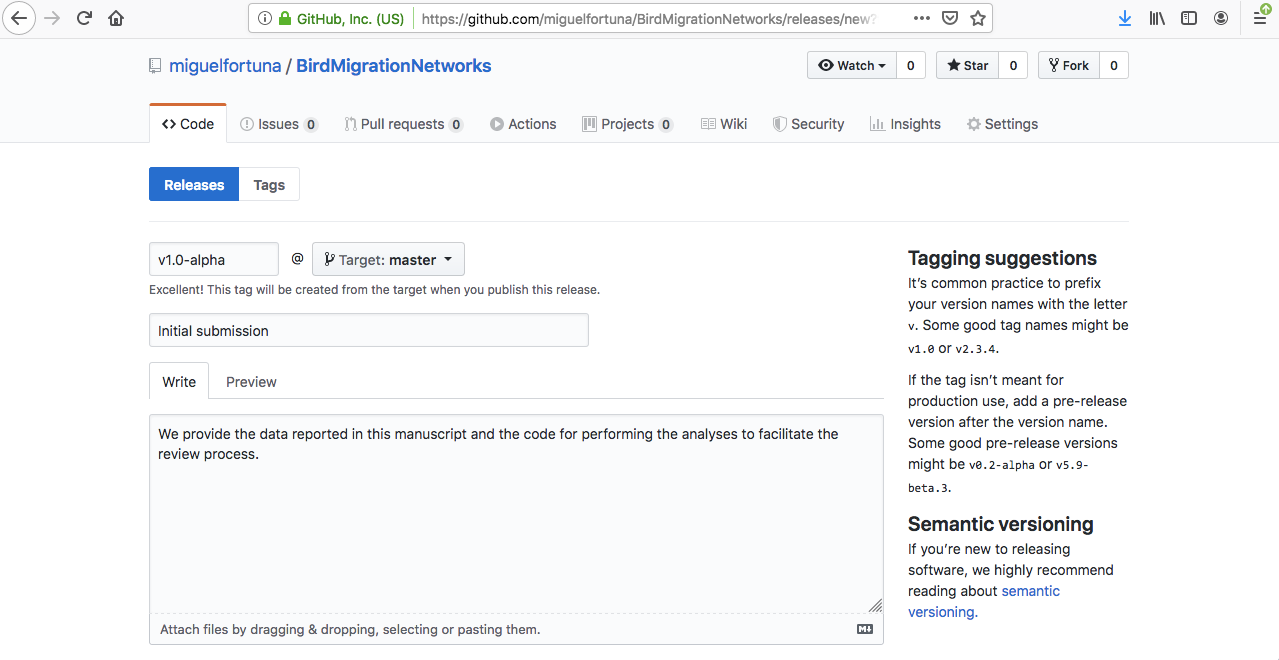
After adding a version name, title, and a short description of the release, click onPublish release:

Zenodo will automatically download a .zip ball of the new release and register a DOI.

Click on it to see more details of the release just created.
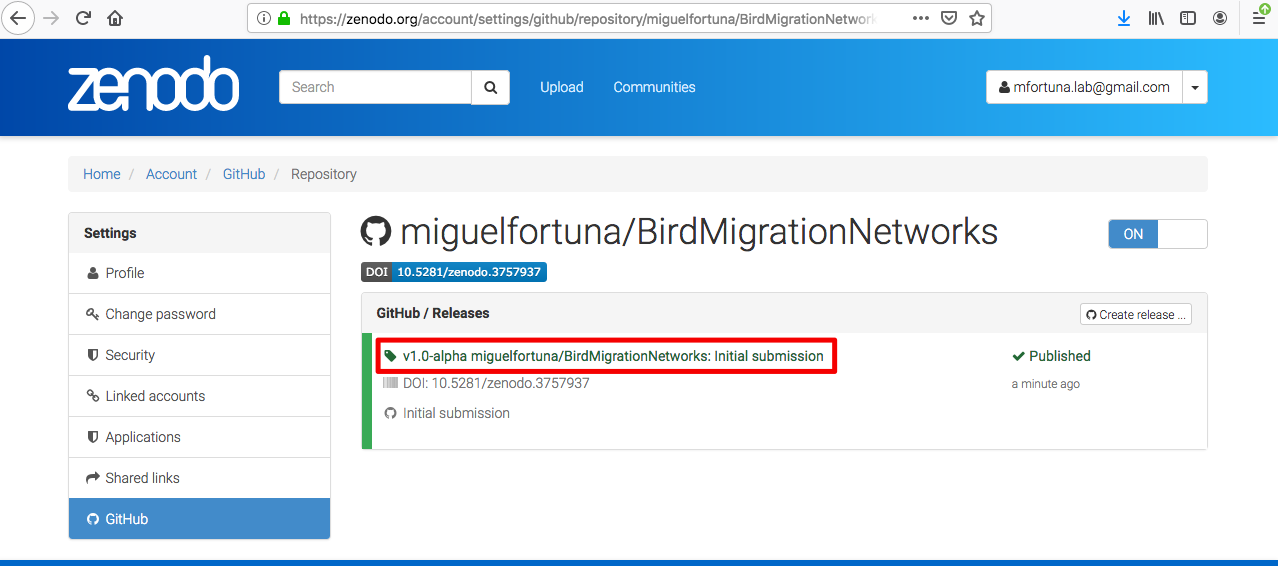
The directory structure will show up as it is stored in your GitHub repository.
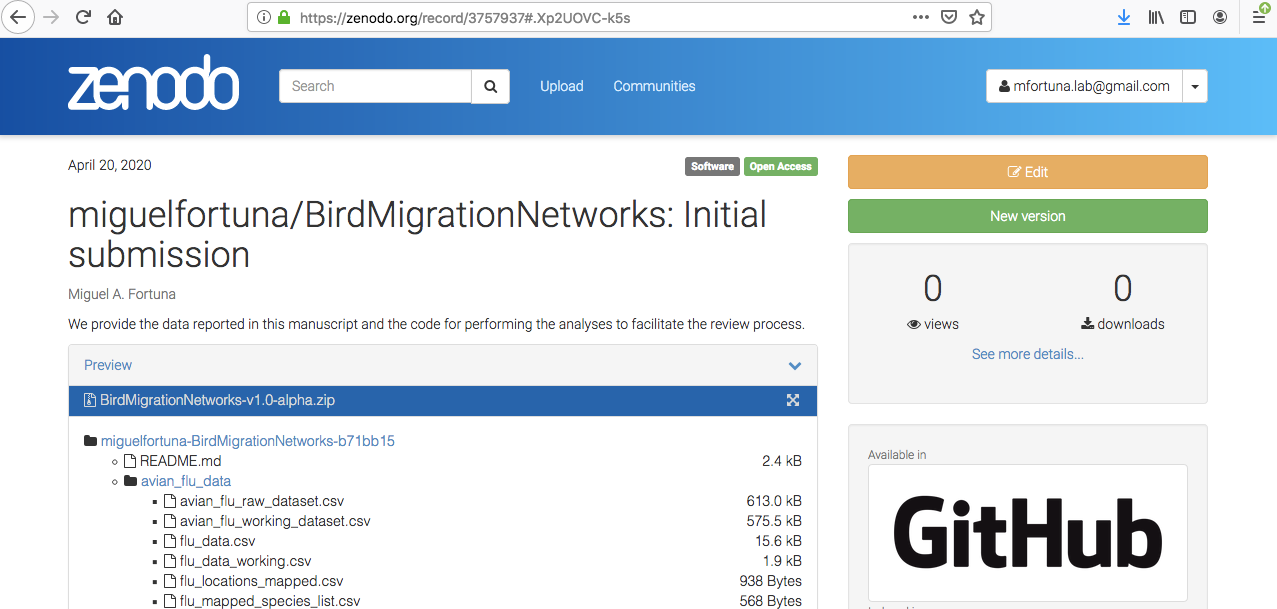
That's it. You can now add the following sentence when submitting the manuscript to the journal:
The data reported in this paper and the code to perform the analyses have been archived on Zenodo: https://zenodo.org/badge/latestdoi/192325725.

